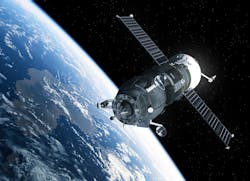Space Force approaches industry for SWaP-C-constrained antennas for future satellite and spacecraft missions
WASHINGTON – U.S. Space Force experts are reaching out to industry to find companies able to design arrays of antennas that are small, lightweight, power-efficient, and affordable enough for small spacecraft and satellites.
Officials of the Space Force's Space Development Agency (SDA) in Washington issued a request for information (SDA-SN-24-0003) last week for the Spaceborne Antenna Array Technology project.
SDA officials are asking industry ideas on potential space antenna array payloads that have low size, weight, power consumption, and cost (SWaP-C). These antennas should prove valuable for future SDA projects and experiments. Antenna arrays provide beam agility to interference rejection but often are considered to be big, heavy, power-hungry, and expensive.
Still, experts believe that antenna array technology are mature enough to be economically and technically feasible for relatively small proliferated space vehicles that are commonly used for SDA missions.
SDA is seeking SWaP-C-constrained space antennas to reduce risk towards interoperability within Proliferated Warfighter Space Architecture development -- particularly to enhance satellites within the Proliferated Warfighter Space Architecture to operate in contested environments.
SDA seeks space antennas that can be integrated and operated on satellites that are roughly the same capability of typical SDA Tranche vehicles, which weigh from 550 to 1,100 pounds, and generate average power of 700 to 1,000 Watts.
Related: The new frontier of small-form-factor embedded computing
SDA is most interested in antennas that can operate in UHF, L-band, S-band, combined L-band and S-band, and Ka-band frequencies. Antennas should be able to trade gain and beamwidth as a function of range to cover earth regions at nadir and close to the horizon.
Antennas also should offer limited space vehicle bus mounting options that result in minimal blockages and interference; be able to steer to signals without affecting satellite bus attitude; be able to acquire communications rapidly with ground sites; be able to form several beams to communicate with more than one terrestrial user; and be able to steer nulls is specific directions to mitigate interference sources.
Companies should email 25-page responses to the SDA at [email protected]. More information is online at https://sam.gov/opp/368b929db4044ac18c4f14cace97b737/view.
